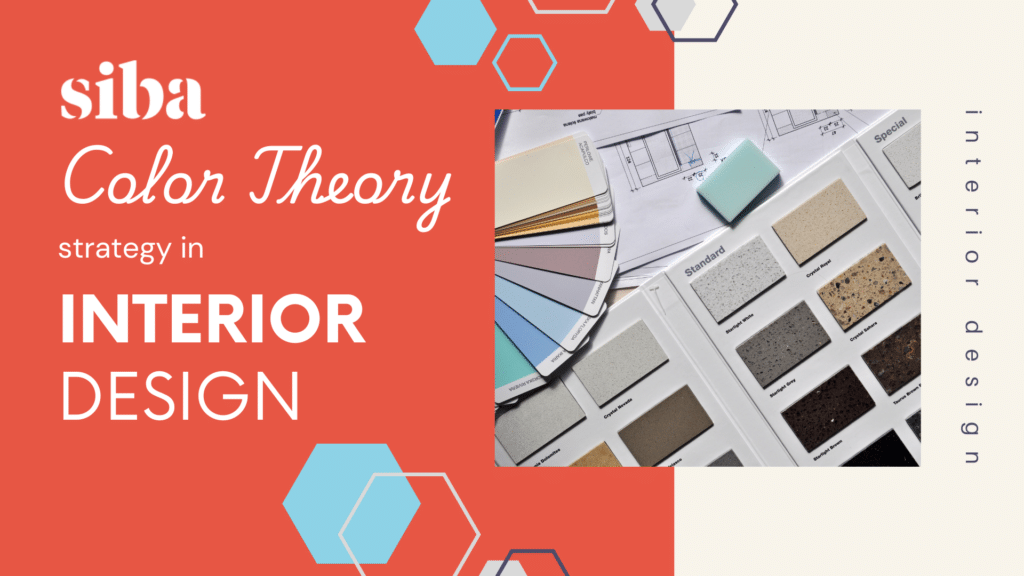When it comes to interior design, many people focus on the physical aspects of a space, such as furniture, layout, and architecture. However, one crucial element that can make or break the ambiance and functionality of a room is often overlooked: color. Color theory, the study of how colors interact with each other and human emotions, is a vital component of interior design that can elevate a space from ordinary to extraordinary. In this article, we’ll explore why color theory is essential in interior design and how it can impact the mood, functionality, and overall aesthetic of a room.
The Psychology of Color
Colors have a profound impact on our emotions and behavior. Different hues can evoke feelings of calmness, energy, or even nostalgia. For instance, the color blue is often associated with feelings of trust and serenity, while the color red can stimulate feelings of excitement and passion. Understanding how colors affect human emotions is crucial in interior design, as it allows designers to create spaces that promote specific moods or atmospheres.
In interior design, color theory is used to create a specific emotional response or to enhance the functionality of a space. For example, a bedroom designed with calming colors such as soft blues and whites can promote relaxation and improve sleep quality. On the other hand, a home office designed with stimulating colors such as oranges and yellows can increase productivity and focus.
Color Harmony and Balance
Color harmony refers to the way colors work together to create a visually appealing effect. There are several principles of color harmony, including complementary, analogous, and triadic color schemes. Understanding these principles is essential in interior design, as it allows designers to create spaces that are aesthetically pleasing and balanced.
A well-balanced color scheme can also impact the functionality of a space. For instance, a room with a dominant color can create a sense of cohesion and unity, while a room with clashing colors can create visual tension and discomfort. By applying the principles of color harmony, designers can create spaces that are not only beautiful but also functional and comfortable.
Color and Lighting
Lighting is a critical aspect of interior design, and color theory plays a significant role in this area. The color temperature of lighting can greatly impact the ambiance of a space. Warm lighting, such as incandescent bulbs, can create a cozy and inviting atmosphere, while cool lighting, such as LED bulbs, can create a bright and energizing atmosphere.
Color theory can also be used to enhance the effect of lighting. For example, using warm colors such as oranges and yellows in a room with warm lighting can create a sense of comfort and relaxation. On the other hand, using cool colors such as blues and greens in a room with cool lighting can create a sense of energy and stimulation.
Color and Branding
In commercial interior design, color theory is used to reinforce a brand’s identity and values. A company’s brand colors can be incorporated into the design of their office or retail space to create a cohesive and recognizable brand image. For example, a tech company may use bold and bright colors such as reds and oranges to convey innovation and energy, while a wellness center may use calming colors such as blues and greens to promote relaxation and serenity.
The Impact of Color on Space Perception
Color theory can also impact our perception of space. Dark colors can make a room appear smaller, while light colors can make a room appear larger. Warm colors can create a sense of coziness and intimacy, while cool colors can create a sense of openness and airiness.
By understanding how color affects our perception of space, designers can create optical illusions that enhance the functionality of a room. For example, a small room can be made to appear larger by using light colors on the walls and ceiling, while a large room can be made to appear cozier by using warm colors and textures.
Color theory is a vital component of interior design that can impact the mood, functionality, and overall aesthetic of a room. By understanding the psychology of color, principles of color harmony, and the impact of color on lighting and space perception, designers can create spaces that are not only beautiful but also functional and comfortable.
Whether you’re a student of interior design or a professional in the field, understanding color theory can take your designs to the next level. By incorporating color theory into your design process, you can create spaces that inspire, energize, and uplift. So, the next time you’re designing a space, remember the power of color and how it can transform a room from ordinary to extraordinary.
As you can see, color theory is not just a nicety in interior design – it’s a necessity. By ignoring the principles of color theory, you risk creating spaces that are uninviting, uncomfortable, and even dysfunctional. Don’t let your designs fall flat – invest in the power of color theory and take your interior design skills to the next level. Whether you’re designing a home, office, or retail space, color theory can make all the difference. Siba’s Interior Design program offers color theory courses along side all the components that bring spaces together, check out our course summary now!
Siba creates a special opportunity for students to learn and grow creatively as well as learning valuable business tools that correspond to their specific industry. Learn more about all of our programs in Fashion Development and Merchandising, Business Administration, Graphic Design and Interior Design. Our team of experienced staff are ready and willing to help you refine your skills and build you up to reach your potential in your selected area of study. Reach out to our team today for more information! Your career and professional life begin at Siba!

